
iStudy for Success!
Online learning tutorials for essential college skills.
Cooperative learning is the ability to work with others - a skill highly valued by employers and corporations. Regardless of the kind of work you do, whether you become a doctor, factory worker, accountant, or television producer, you will be required to work as part of a team. For some people this skill comes naturally. For others, it is new and difficult. Work teams have replaced the independent worker in virtually every profession. Successful employees and even successful entrepreneurs need to have the ability to work cooperatively with others. 
Furthermore, whether at work, at home, or within the community, sharing knowledge from a variety of sources will help you - and your family or co-workers - to achieve goals. In our complex information-driven society, no one person has all the answers, data, or ideas. In other words, you can't get a spaceship off the ground - or back on the ground - by yourself.
Cooperative learning may be very different from more traditional forms of learning you have previously experienced. In a cooperative learning group you can erase the picture of a teacher in front of the classroom delivering a lecture. The paradigm shifts and students take charge of their own learning via their cooperative learning groups. The teacher's role changes from an expert information provider to a group facilitator.
Considering this, cooperative learning is both a teaching philosophy and a collection of instructional strategies to help you become proficient as a team player, learner, and worker. Cooperative learning has a synergistic (according to the dictionary that means "cooperative action among discrete agencies") effect. It will help you learn better and accomplish more by creating a way of learning in which the whole is greater than the sum of all the parts.
After completing this tutorial on cooperative learning, you will have taken a giant step toward becoming a skilled cooperative learning group member. Remember, this is just an introduction. As you are working through this tutorial, think about other situations in which you would benefit from cooperative learning experiences and look for opportunities to continue participating in cooperative learning groups.
The ideal way to become skilled in cooperative learning is to experience it, but first, you need to understand the basic tools. The overall goal of this tutorial is to enable you to successfully engage in cooperative learning. Upon completion of this tutorial, you will be able to:
The cooperative learning information is organized into three parts.
Part 1 is about the characteristics, basic elements, and benefits of cooperative learning.
Part 2 is about the characteristics of an effective group and the expected behaviors and responsibilities of group members.
Part 3 is about what to do when problems arise while working with other group members.
You will complete activities throughout the three sections to help you consolidate and summarize what you have learned and assist you in thinking about how to apply the information to your personal situation. The activities are designed to help you prepare for future group meetings and further cooperative learning experiences.
Note: All external links in this tutorial will open in a new window or tab.

A working definition of cooperative learning is the use of small groups through which students work together to maximize their own and each other's learning.
Example: A team-based project where grades are based on the performance of the team.
In contrast, a definition for competitive learning would be: students work against each other in order to achieve an academic goal (such as a high grade) that only one, or very few, of the students can attain.
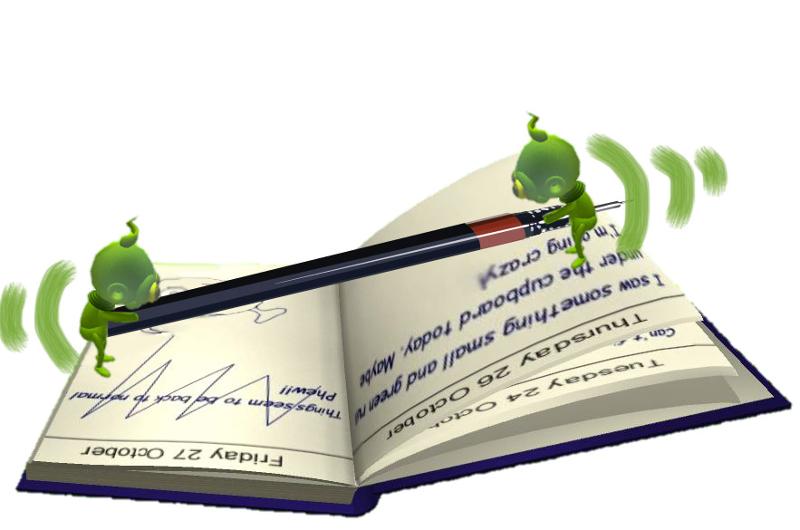
Examples: Most high school and college classes; grading on a "curve;" class rankings based on GPA.
Finally, there's individualistic learning; students work by themselves to accomplish learning goals unrelated to those of other students.

Example: A self-directed learning project such as investing in stocks.
The differences and similarities between traditional learning and cooperative learning groups can be summarized like this:
|
Traditional Learning Groups |
Cooperative Learning Groups |
|
|
Cooperative learning is a strategy designed to help you maximize your own and other classmates' learning. This strategy makes use of small groups and students working together as a team. The team approach has proven successful not just for learning in college classrooms, but also in the workplace, in community activities, and even in the home. The cooperative learning team uses specific techniques to make sure everyone in the group meets the defined goals. NOBODY gets to slack off, and no member of the group gets stuck with all the work.
Take the quiz below to see if you understand what cooperative learning is and how it differs from other types of learning.

There are five fundamental elements involved in cooperative learning. In fact, these five elements distinguish cooperative learning from other forms of group learning. These elements can be thought of as pieces in a puzzle. When all of these elements are present in a learning situation, the result is a cooperative learning group. The five basic elements of cooperative learning are:
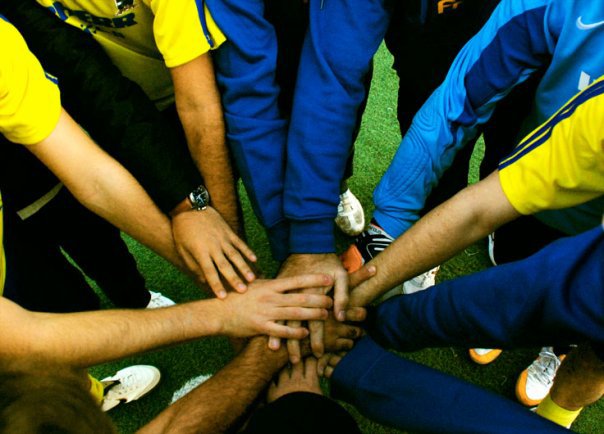
This means the group has a clear task or goal so everyone knows they sink or swim together. The efforts of each person benefit not only the individual, but also everyone else in the group. The key to positive interdependence is committing to personal success as well as the success of every member of the group.
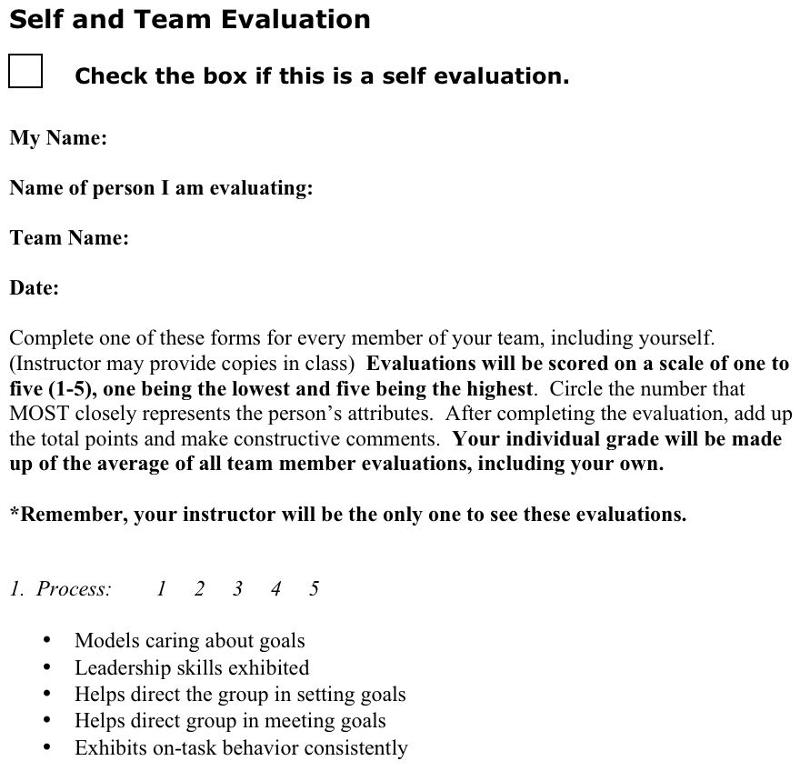
The group is accountable for achieving its goals, and each member must be accountable for contributing a fair share of the work toward the group goal. No one can "hitchhike" on the work of others. The performance of each individual must be assessed and the results given back to the group.
Interpersonal and small group skills are required to function as part of a group. These are basic teamwork skills. Group members must know how to - and be motivated to - provide effective leadership, make decisions, build trust, communicate, and manage conflict.
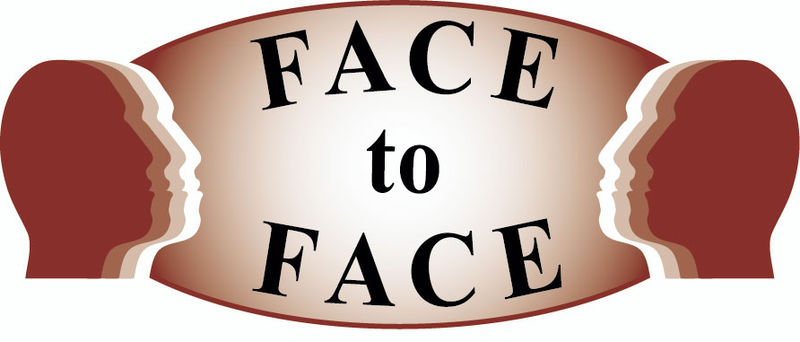 This means that students promote each other's success by sharing resources. They help, support, encourage, and praise each other's efforts to learn. Both academic and personal support are part of this mutual goal.
This means that students promote each other's success by sharing resources. They help, support, encourage, and praise each other's efforts to learn. Both academic and personal support are part of this mutual goal.
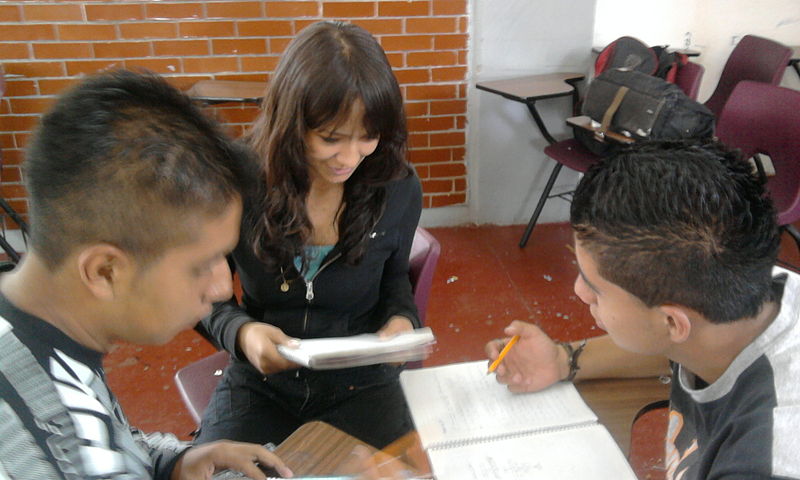
Group members need to feel free to communicate openly with each other to express concerns as well as to celebrate accomplishments. They should discuss how well they are achieving their goals and maintaining effective working relationships.
[top of page]
To help you understand cooperative learning a little better, here are some ideas and activities that could help team members develop better skills in each of the areas listed above.
[top of page]
Although team dynamics (how the individual team members work together) can differ from team to team, effective teams share the following characteristics:
Full participation - All team members contribute their time and energy to the project. More importantly, all team members participate in the decision making process.
Trust - Members trust that each member will add value to the project, and members work to ensure that everybody contributes and that appreciation is expressed for different contributions.
Open communication - Communication is the glue that holds a team together. Communication is effective when all members:
Social/business balance - Although teams shouldn't socialize 100% of the time, it shouldn't be all business either. Casual conversation allows members to know each other better, leading to better working relations.
Check to see if you understand the basic elements of cooperative learning by completing this quiz below.

Cooperative Learning helps to:
Research shows cooperative learning helps to produce:
Hopefully you have already had some successful experiences with cooperative learning and you can relate to many of the benefits listed above. If you haven't had any experiences with team or group work, or if you have only had bad experiences, don't worry! Becoming skilled in cooperative learning takes time, patience, and persistence. The more you learn about cooperative learning and the more you practice your skills, the better you will become and the more benefits you will experience. It takes time.
Here are some additional benefits of cooperative learning.
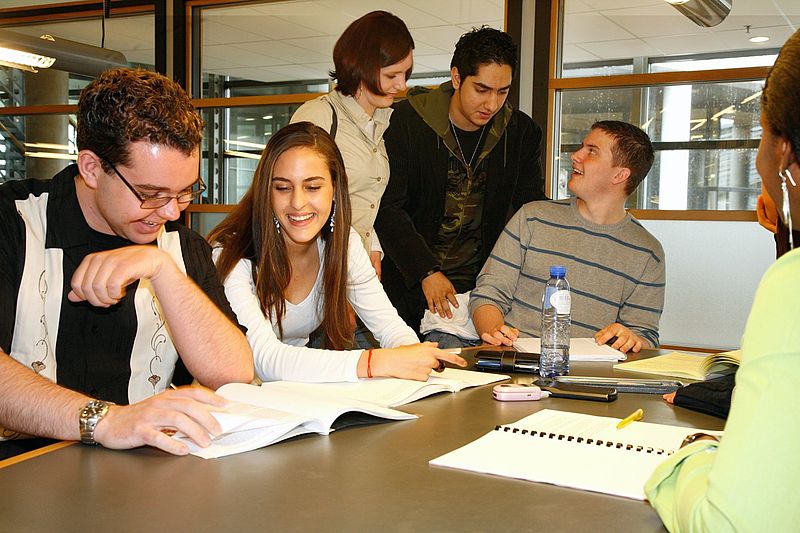 Informal study groups are a form of cooperative learning. Many students find it helpful to organize in small groups of classmates to review class materials and study for quizzes and exams. These groups are somewhat different from formal cooperative learning groups in that the members can come and go as they like. As with any group, difficulties can occur. The following are tips for forming study groups and studying and learning in groups.
Informal study groups are a form of cooperative learning. Many students find it helpful to organize in small groups of classmates to review class materials and study for quizzes and exams. These groups are somewhat different from formal cooperative learning groups in that the members can come and go as they like. As with any group, difficulties can occur. The following are tips for forming study groups and studying and learning in groups.
Successful cooperative learning doesn't just happen. It takes extra effort by each group member. For group work to be successful, individual group members need to have clear goals, plans and roles, as well as the ability to work together, mutual accountability, and the other elements of effective groups.
As stated earlier, to make group work effective and successful, groups need to have well-defined goals and a plan for meeting those goals.
Another important element of success is for each team member to have an assigned role. Groups tend to function better if member roles are defined and assigned during the first meeting. These roles help all members to actively participate in the group process. However, each member doesn't need to be stuck in one role. Consider rotating roles, depending on the goals and activities of the meeting, so each member can experience all five functions of the group.
(Individual Roles that Help Groups Stay on Task)
Taskmaster - makes sure the group stays on task . 
Sample Taskmaster statements:
Checker - verifies that everyone agrees with an answer or approach and that all understand. 
Sample Checker statements:
Gatekeeper - makes sure each person has a turn and that all participate about equally - no loafers and no bullies. 
Sample Gatekeeper statements:
Praiser - encourages others to share ideas, give opinions, and work hard. Makes sure members know they have done a good job and are appreciated. Praises ideas and helping behaviors. 
Sample Praiser statements:
Recorder - documents responses once all agree. Completes group evaluation forms. 
Sample Recorder statements:
You can even have a group of more than five - there are lots of additional roles additional members can play that will be helpful - roles like Gofer (go get stuff), Clarifier/Paraphraser, Noise Monitor, Researcher, Elaborator, Prober, and Integrator - just to name a few.

In a cooperative learning situation, every team member has both individual responsibilities and group responsibilities. If a team member doesn't take care of his or her share of the responsibilities, it will cause problems for the entire group. Think about the following:
Each individual is responsible for:
As a team, students are responsible for:
Expected behaviors:
Successful teams are willing to collectively review their output and processes to ensure that the final product or solution meets or exceeds the team goal. Evaluations are important in cooperative learning because they help to assess the effectiveness of both the group as a whole and the individual members.
 The Recorder is responsible for filling out the group evaluation form with input from the other members. There is space to record what the group did well, as well as areas that need improvement. These two areas focus on the group as a whole. For example, a response to an item asking what the group did well may be "finished ahead of time."
The Recorder is responsible for filling out the group evaluation form with input from the other members. There is space to record what the group did well, as well as areas that need improvement. These two areas focus on the group as a whole. For example, a response to an item asking what the group did well may be "finished ahead of time."
Another area of the group evaluation form asks the group to identify something each member did to increase group effectiveness. This adds an individual dimension to the group evaluation form because it helps members identify each other's strengths and provide positive feedback.
Just as the group evaluation form helps to assess the effectiveness of the group as a whole, the individual evaluation is a way to measure the effectiveness of each member. Using an individual evaluation form, each member evaluates his or her own performance in the group.
The third area of evaluation is peer evaluations. Each member of the group should have an opportunity to evaluate the individual performances of the other members of the group. These peer evaluations are often helpful in determining where the group is having problems as well as in determining the final grade for each individual. They can also help to motivate group members to meet their responsibilities to the group.
Refer to the criteria below to evaluate and suggest ways to improve your group performance in the future. (Checklists for evaluating group performance taken from Leadership and Teamwork by Career Pathway)
Note: Downloadable RTF files of these evaluation forms are included in the left sidebar of this page.
Group Name:
Group Members:
Meeting Date, Time, Place:
Length of Meeting:
Group Members Who Were Present and Their Cooperative Learning "Roles:"
Name three things your group did well when working together.
1.
2.
3.
Name one thing your group could do even better.
1.
As a group, identify something each of your group members did that helped the group be effective.
On a scale of 1 (low) to 10 (high), our group's efforts and accomplishments at this meeting were a ____.
General Comments:
Learning About Cooperative Learning
Use the following scale to rate yourself on the questions below:
5 = Excellent 4 = Very Good 3 = Good 2 = Poor 1 = Unsatisfactory
1. My individual pre-meeting preparation was ____.
2. My performance of my "role" for the meeting was ____.
3. My contributions to my group's success were ____.
General Comments:
Effective leaders and teams continuously evaluate and improve their performance. Here are some criteria by which to judge the performance of your team and your own leadership and teamwork skills.
Note: A downloadable RTF file of this checklist is included in the left sidebar of this page.
Clear Goals and Plans
Commitment to Goals and Success
Team Responsibilities and Contributions
Team Leadership and Decision-Making
Interpersonal Relations
Resource Management
Team Meetings
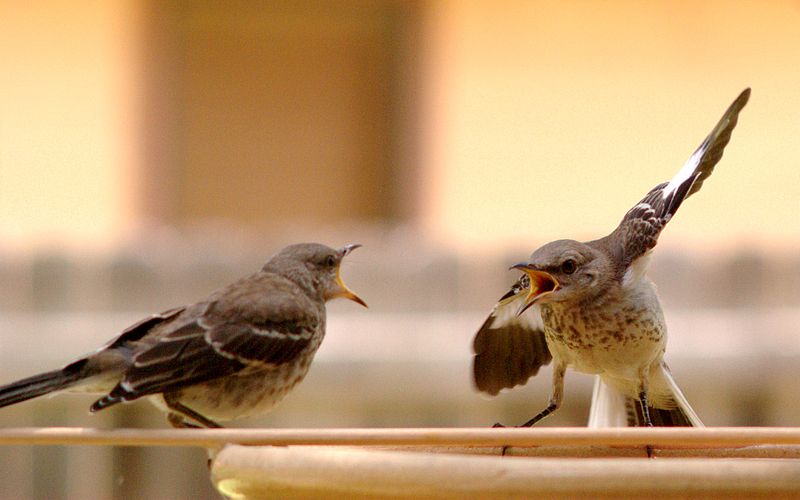
It is important to understand that even when the group is having difficulties, the members should not expect the instructor to fix everything. A good rule of thumb is to try to solve the problem at least three times as a group, or with the assistance of another group, before calling on the instructor.
Group work is not without problems. When a group is functioning well, it often brings out the very best in its members. But when a group is not functioning well, it can be stressful for everyone.
Various things can and will go wrong in any cooperative learning group. The next section outlines some problems that may occur within groups. Read through these to get a general sense of what could happen and what possibilities exist to help resolve problems.
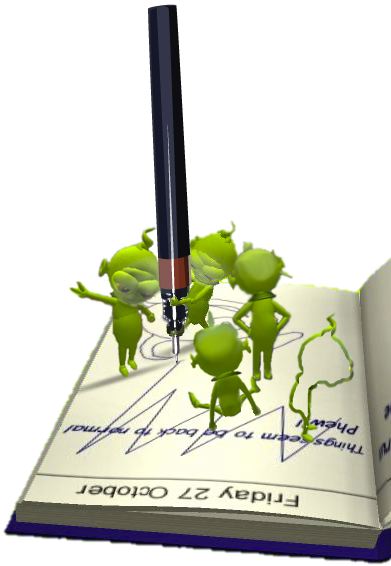
A common problem in many groups is that one of the members fails to attend a meeting. Often there are valid reasons why a person doesn't show up. However, it can result in non-productive time for other members because each person is a key to the group's success. Everyone is dependent on the input and involvement of the whole team. Consequently, when one member of a cooperative learning group is absent everyone suffers.
Talk with the person who is missing meetings - he or she may have an excellent reason. If not, remind the person how important he or she is to the whole group's success. Encourage the person to join you. If all else fails, talk to your instructor as last resort and explain how you have tried to resolve the problem. Your instructor may have other ideas and, in the end, he or she has the power to give grades.
It happens - sometimes students aren't prepared for class or for cooperative learning group meetings. This prevents the group from being effective and leads to other members taking up the slack. Continued lack of preparation can lead to conflict in the group and unachieved goals.
Some "slackers" may not even know they fall into this category. Have everyone in the group evaluate each other - in fact, your instructor may do this at any point in time. Having students evaluate each other quickly identifies "slackers." If stressing the importance of being prepared for meetings doesn't work for the group, a little reminder that group evaluations are part of the overall grading process probably will.

Sometimes groups have individuals who resist and behave inappropriately in an effort to hamper the process. They may make comments, such as "Why do we need a team name?" or "This is a waste of time," or "Let's call ourselves the Five Time Wasters." Resistance can come in many forms, such as being boisterous and disruptive. Or sometimes a group member will become silent and passive.
These behaviors can prevent a group from accomplishing its goals.
Try some role-playing. Your instructor may have shown you this technique already. If not, you may want to have him or her help you through it the first time. Ask a person in the group to act as the resistant member. The student with the unproductive behavior often sees herself or himself in the scenario and changes his or her behavior. After the role-play, the group should discuss the experience, talk about the situation, and invent effective ways to deal with it. You may help other groups by reporting the results of this exercise to the whole class.
Everyone in the group is quite suited to some of the cooperative learning roles more so than they are for others. For example, a student who is assertive by nature may feel quite comfortable as a Taskmaster, but someone who is more introverted may be very reluctant to take on that position. Because of different styles and personalities, a group member may refuse certain roles.
Usually unwillingness to perform a role is due to lack of experience. Once a group member has gained exposure and experience in a variety of situations, he or she will feel more at ease with any of the five roles. One way in which to provide this experience is to have everyone play all five roles, but only for a short time. Take one short task or action item and deal with it. Then rotate around the group with a different short task until everyone has gotten a taste of what each role is like. Your instructor can help you make sure the roles are being enacted correctly and clarify any questions you may have.
Someone may be slow to understand specific content at one time or another and this may occur for many different reasons. Some students feel a great deal of pressure in group situations because their comprehension of the material may not be the same as that of other group members.
Communication problems may not be due to a lack of understanding but can simply be a result of nervousness in a group atmosphere. Being nervous often hinders effective communication. It is said, "a chain is only as strong as its weakest link." This statement applies to group situations where one or more members are struggling to understand or communicate in a group setting. If one member is struggling, the effectiveness of the entire group is compromised because the group's success is dependent on the contribution of each member
The solution is simple - always help each other. Every member of the group will struggle at one time or another. The result of helping each other and building a sharing and caring environment will be a win-win situation for everyone.
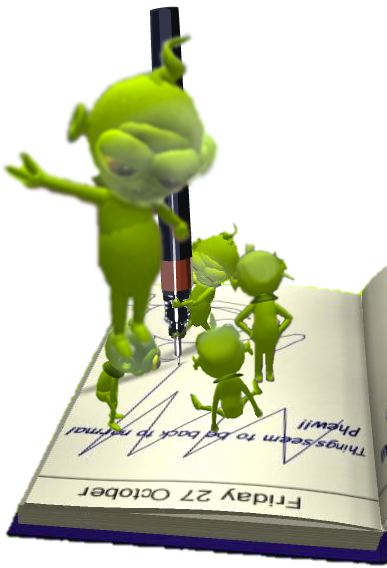 Some people are talkers who believe the whole world is interested in their particular point of view, while others prefer to keep to themselves. We all have different personalities and characteristics. But, sometimes when these very different personality types come to the surface in a small group, communication can be affected.
Some people are talkers who believe the whole world is interested in their particular point of view, while others prefer to keep to themselves. We all have different personalities and characteristics. But, sometimes when these very different personality types come to the surface in a small group, communication can be affected.
The goal of cooperative learning is not to change peoples' personalities! So, the role of the Gatekeeper is a good model for handling these issues. Shy people may need to be prompted, and the talkers may need to be reminded to listen. It may take a little while for people to get used to being drawn out or "shushed," but as the group develops, these little Gatekeeper's prompts will seem less intrusive and become a natural part of each meeting.
You are waiting for a cooperative learning group meeting to start. One of the members, Hugh, has been working in the group for the past two months. It is well into the semester and although Hugh is the quietest member of the group and doesn't socialize outside of class, he has been an especially good project and task coordinator. Hugh missed the last group meeting and is late arriving today. Ethan observes that Hugh has been slacking off, not producing his usual caliber or volume of work and has not been keeping activities coordinated. The group agrees that you need to find out what the problem is, but how?
Answer the following questions as you analyze this situation.
Hugh's sudden slacking off and lack of production for the group may seem behavioral, but addressing the issues requires communication. Once Hugh feels comfortable talking about what is going on, how it affects the group, and how the group can help deal with it, the logistics of the solution will work themselves out. Hugh is pretty reserved, so getting the required information may not be easy. Even the very best managers and supervisors who are skilled in these areas sometimes have difficulty with this type of situation. In any case, don't ignore the problem.
The discussion should focus on the information the group needs, not on Hugh personally. If possible, choose a group member who has a good relationship with Hugh to talk with him. Explain to Hugh that his friends have noticed the change in the work he has been producing and that it would be good if together you could figure out how to get things back on track. Unless you are seeking specific times, dates, or events ("What other time-consuming courses are you taking this semester?"), try to avoid questions that can be answered with a simple "yes" or "no." Instead, ask open-ended questions to keep the conversation going. Questions may be prefaced by something positive like: "You've been great with coordinating all our tasks and activities since the beginning of the semester, what's changed?" Don't be confrontational. Assume the best about Hugh; that he is dealing with a personal or academic issue that is consuming his time and hindering his efforts. Be friendly, smile, make eye contact, agree, and nod as Hugh responds. Make sure he knows he is being heard. Encourage him to keep talking.
For example, tell Hugh that he is liked and respected and is a valued part of the team. However, he has not been well prepared lately, has been late, and has missed a meeting. For the team to function effectively and efficiently, his contribution is needed. So how can the team help?
Look for explanations but not excuses. There is most likely a reasonable explanation, such as illness in Hugh's family, a roommate problem, or a point in the semester when major projects are all due at once.
At the end of the conversation, make sure everyone involved understands what has been said. Restate Hugh's comments and position. Summarize the key points. Then, the group should brainstorm about alternatives, priorities, or changes of assignments (temporary or permanent). The team must decide what performance is expected, what is acceptable in this situation, and if there is a way the team can help - after all, we can all use a little help from our friends once in a while.
[top of page]
Your group has had a few meetings and things are going pretty well, except for one significant problem. Frances always has to have her own way about everything. No matter what, it's a struggle between her way of doing things and what other members of the group think should be done. Consequently, the group's progress is slow, decisions are hard to come by, and people are getting frustrated. What are some ways to work through this situation?
Answer the following questions as you analyze this situation.
The group should not be deciding or choosing who gets his or her way but should be trying to figure out the best way for the group. Frances seems to be looking at things from a "me-versus-you" perspective and has a really strong desire to be in control. Perhaps she has experienced a time when a partner or other group members failed to do their parts, and she paid for it with a low grade or hurt feelings.
Effective groups have an atmosphere of partnership. The group must be clear about seeing its work as a process where everyone needs each other (remember positive interdependence?). Frances' strong need to be in control can be weakened by focusing on shared power to meet collective needs. The group should avoid power that is negative (i.e. "power over") and instead seek positive aspects of power ("power with").
Ask Frances to describe what she thinks are the needs of the group or what the situation really is. Keep her focused on the needs of the situation, not on controlling the situation. Help her come up with things that she can accomplish based on those needs. During the discussion, try to establish a strong sense of partnership with Frances. The idea is not to break down, but to build up and agree on what will help the group make progress on the assignments.
For example, make a list of things that need to be done to accomplish a group assignment. Set aside items that people disagree on, and make a list containing similar and viable options. Write these down and discuss them once the list is complete. Put similar items together and narrow down the list. Think about how each item would play out for the group.
The idea is to focus on key items or options that meet the shared needs of the group and have the best chance of working successfully. By doing this, it weakens and defuses Frances' personal needs and focuses the group on developing agreements and seeking out shared goals.
The group could also assign Frances the "Praiser" role for a while. This assignment would complement the idea of having her work in partnership with what is mutually beneficial for the group as a whole.
Finally, if the group is not able to succeed on its own with Frances, a coach or facilitator may be able to accomplish what the group couldn't. The faculty member with whom the group is working could help with the coaching duties, or the faculty member could recommend someone else on campus with experience and expertise as a coach who could be help with the group dynamic.
[top of page]
You like your group. Everyone gets along just great! You all have a variety of complementary skills and talents. No one dislikes anyone else. Everyone comes to meetings. You have terrific discussions.
There's just one little problem. The group can't make a decision. When it comes down to making a choice, sticking with it, and taking action, it just doesn't happen. And, there are due dates looming on the horizon. This has to change - but how?
Answer the following questions as you analyze this situation.
No matter how well the group interacts with each other, having a terrific conversation doesn't count as teamwork and it doesn't help you make decisions that are critical to taking action and completing assignments.
If you aren't making progress, maybe you just need to stop and take a break. Order a pizza. Set a specific time to reconvene and get down to business; or maybe it isn't that simple.
There are ways to facilitate making decisions in groups. First you have to understand the problem, which is sometimes more difficult than you think. Then clarify the issues, figure out their scope and complexity - what's involved, what other issues might be affected, what is the context, what information do you still need? Basically, gather the relevant data. Next, generate a list of ideas or solutions.
You don't want to lose everyone's good thoughts, so you might want people to work in pairs or individually to generate ideas that might otherwise get lost in the group atmosphere. However you do it, talk through each idea or alternative. Realize that you may have to make some intelligent guesses. Then, implement! Identify what needs to be done and what materials or resources are needed, develop a backup plan, and lay out the project.
Understand that things will be chaotic, unclear, and imprecise. You'll have to deal with that so you can alleviate some of the frustration. Make sure you allow enough time to examine the problem adequately. Ask each other about the best way to organize the group.
Use the group evaluation form to talk about the effectiveness of your organizational scheme. Make sure the problem or task is clear, you have sufficient information or data, you've used decision-making procedures, and you have a good balance of agreement and disagreement.
There are ways to structure decision-making activities. Among these are brainstorming, nominal group technique, and consensus mapping.
Brainstorming helps to evoke many creative solutions or alternatives. Encourage everyone in the group to throw as many ideas on the table as possible. Even though the ideas may seem weird or wild, keep your minds open to new thoughts and ideas. Suspend all criticism and evaluation; you can organize them later.
Nominal group technique involves having each group member create a list of ideas in writing. There are lots of variations on this technique, but basically go around the group and have each member state one idea. Discuss each idea until it is clear to everyone and its pros and cons are understood. Keep going until everyone's ideas have been recorded. Then, take a preliminary vote. Discuss the results and do a final ranking.
If the group is still having trouble agreeing on the problem, try consensus mapping. Have each person write down the key dimensions of the problem on individual pieces of paper. Cluster and re-cluster these notes until there is general agreement on the problem and its dimensions.
Other things to think about:
If you've tried these techniques and you're still stuck, then consider bringing in a coach or facilitator. Sometimes introducing a person who is external into the group provides a catalyst and inspiration.
* Indicates that the original Website is no longer available.
Cooperative learning is the use of small groups through which students work together to maximize their own and each other's learning.
Cooperative Learning helps to:
(Individual roles that help groups stay on task)
Taskmaster - makes sure the group stays on task.
Checker - verifies that everyone agrees with an answer or approach and that all understand.
Gatekeeper - makes sure each person has a turn and that all participate about equally - no loafers and no bullies.
Praiser - encourages others to share ideas, give opinions, and work hard. Makes sure members know they have done a good job and are appreciated.
Recorder - documents responses and completes group evaluation forms.
Each individual is responsible for:
As a team, students are responsible for:
Expected behaviors included:
It should be noted that even when the group is having difficulties, the members should not expect the instructor to fix everything. A good rule of thumb is to try at least three times to solve the problem as a group or with the assistance of another group before calling on the instructor.
Following are the assignments embedded in the Cooperative Learning tutorial:
Cooperative learning is stressed throughout most of the other iStudy tutorials. Therefore, it is recommended that this be one of the first, if not the first, tutorial used in the series.
Cooperative learning is both a teaching philosophy and a collection of instructional strategies. Cooperative learning is synergistic . It's not just the additive effect of group members. The group will be able to accomplish more than any one person can. Research shows that when students work together cooperatively they learn better and accomplish more.
Instructors may want to say:
You need a really good understanding of what cooperative learning is, how it works, what you're supposed to do, and how you're supposed to structure yourself. I'm going to take a few moments to try to run through that with you and we'll get right into an activity. OK? Everybody ready?
Briefly walk students through each item on the syllabus. Emphasize the explicit objectives of the course. A commonly applied approach to introducing students to cooperative learning is to provide plenty of structure early in the process. Then as the students gain skill and knowledge, less structure is required and students can engage in cooperative learning on their own. This helps students avoid the pitfalls experienced in high school committee assignments. The structured process taught in this course develops strong skills that transfer well to the workplace.
There are many ways to assign people to groups. If you know your students well you may want to do this yourself. If you don't know your students you can assign people to groups through a random process, such as having each student choose a card, then have all the diamonds form one group, the hearts form another.
If you don't have the correct number of students to form groups of five each, assign an extra person to several groups, so some groups will have six people. If you do this, you will have to assign one role to two people in those groups.
Try to assign people in non-homogenous groups. Part of this exercise is to bring out different points of view.
This can be a frustrating and scary experience, but it is a great first step towards students becoming self-directed. Instructors may want to explain the difference between teacher and facilitator by saying:
It's not my job to teach, it's your job to learn. It's my job as the teacher to structure the information you need to learn and to present it to the class in a variety of ways. If you are used to a lecture it's natural to feel a little uncomfortable during cooperative learning. It's okay to feel uncomfortable. You can set the course for yourself, but don't feel like I am going to send you out in a ship and leave you. We will structure activities together.
It should be noted that even when the group is having difficulties, the instructor should not jump in immediately. A good rule of thumb is "three before me." In other words, the students should try at least three times to solve the problem on their own or with the assistance of another group before they call upon the instructor. Conversely, instructors can jump in to encourage this behavior as needed.
[top of page]
Have group members introduce themselves.
- If you could have lunch with anyone (alive or dead) who would it be?
- What type of music do you like?
- What happened in the past few weeks that you're excited (or sad) about?
- If you could go into any job next Monday what would it be?
- If you won $1,000,000 what would you do with it?
- If the world was doomed and you could save five people, who would you save?
- What was the most fun you ever had?
- What is the most important event in your life so far?
Ice Breakers
Introductory type activities are often called "ice-breakers." They are very useful in jump-starting a group and building group cohesiveness early in the process. Some students may be nervous about such ice-breakers. Instructors should encourage students to stretch their boundaries, but only to the degree which they are comfortable. The purpose of an ice-breaker is not to put someone on the spot, but to develop group cohesiveness.
One way to reduce anxiety is to have one student "interview" another student, then introduce that person. This can reduce the anxiety and it can also help to speed up the process. Ice-breakers can be very time consuming. Working in small groups can help this, but there is still a chance that some people will get on a soapbox and waste time. The instructor's goal should be to maintain a balance between helping a group to bond and leaving enough time for other activities. Set a time limit for each activity and announce times during the activity.
As the students work their way through the agenda, instructors should assist, guide, and encourage as needed. Instructors should allow the groups to develop self-management skills in order for them to become self-sustaining.
Have all group members verbally confirm they have read or are familiar with the information about the meeting.
Instructors may want to say:
Just as a sports team has a name, a cooperative learning group can adopt a name. Team names often become the way in which a group identifies itself. A lot of camaraderie and team spirit can revolve around the team name. Some teams even develop a team mascot, emblem, logo, or team color. The important point is that the team name should be developed as a team with input and agreement from all members. Make sure everyone is involved in the decision and agrees to the name you choose!
The purpose of agenda item 3 is to develop a sense of camaraderie and friendship. This is accomplished through the process of naming the team. This task should be a group effort in which all members contribute.
- This reading should be done as a pre-class assignment and should be simply reviewed in the group meeting.
- As part of the review instructors may want to encourage students to discuss the points they think are important or the ones with which they agree or disagree.
- This task should be done as a pre-class assignment and should be simply reviewed in the group meeting.
- Instructors may want to encourage students to discuss the points they think are important or the ones with which they agree or disagree.
[top of page]
- They help the group function more effectively.
- They help the group to achieve its goals more efficiently.
Important Information on Roles
In any group situation, roles and hierarchies will emerge naturally. In cases such as this, roles are typically based on position, perceived power, or personality. Sometimes these roles will be inappropriately developed and they may work against the group.
Further, in many cases there will be vital roles that are neglected. For example, the role of Taskmaster may emerge naturally, but the role of Praiser may not emerge and be neglected. Instructors must make a concerted, effort to ensure that the various roles are assumed by members of the group. Instructors must carefully observe each group and interject comments about the roles if a group member is hesitant or unsure how to play the role.
Different people are more naturally suited to assume certain roles. For example, an assertive person may be better able to fill the role of Taskmaster than someone who is more introverted. Problems can arise when people are uncomfortable about the roles they are asked to assume. Sometimes this discomfort is a result of no experience in that role. Other times it is simply a function of unwillingness to assume a role.
It is important that students not only assume roles, but that they gain exposure to and experience as a variety of roles.
- Each group member is performing his or her role properly.
- The group remains on task.
- Different viewpoints are allowed to surface.
Students should realize by now that cooperative learning is very different from traditional forms of learning. As students explore the differences between cooperative learning and other forms of learning they will make the connection that the role of the instructor is different as well. It is important that instructors make the shift from "expert" to "expert facilitator" and allow learning to take place within the group.
As an instructor:
What have you struggled with?
How did you view your role before and after cooperative learning?
What do you like and dislike about it?
Instructors may want to say:
There are five fundamental elements involved in cooperative learning. In fact, these five elements distinguish cooperative learning from other forms of group learning and can be thought of as pieces in a puzzle. When all of these elements are present in a learning situation, the result is a cooperative learning group. The five basic elements of cooperative learning are:
Positive interdependence
Individual and group accountability
Interpersonal and small group skills
Face-to-face promotive interaction
Group processing
Note: It's the Checker's responsibility to be sure each group member understands, and the Taskmaster's job to be sure the Checker completes his task. Instructors should "spot quiz" different members to make sure that they have accomplished this goal.
Many benefits of cooperative learning have been presented thus far. Also, you have probably begun to experience many of the benefits of cooperative learning. Take some time to reflect on the experiences you have had with cooperative learning to this point. Do some of the things you have experienced match the benefits shown in the student manual? Are there additional benefits that are not presented in the manual?
Hopefully you feel that you have had a successful experience with cooperative learning and you can relate to many of the benefits presented. On the other hand, maybe you have not experienced all, or even any, of the benefits listed. If this is the case - don't give up! Becoming skilled in cooperative learning takes time, patience, and persistence. The more you grow in your understanding and the more you experience cooperative learning, the better you will become and the more benefits you will experience. It takes time!
This experience was meant to be the tip of the iceberg - to give you a taste of cooperative learning. Hopefully students can relate to many of the benefits shown in the tutorial. Further, some may be able to identify additional benefits that are not even presented.
A student's ability to recognize and relate to the benefits is directly related to his/her experience with cooperative learning thus far. Students who have a positive experience with the group will be more apt to recognize and agree with the benefits that are listed
However, some students will have experiences with cooperative learning that are not as positive (perhaps even negative). These students may be unable to identify with the benefits and they may even disagree with them.
If people have negative experiences with cooperative learning, it is important to intervene to minimize frustration and help them to get back on course. In fact, difficulty and even failure can be as valuable as success in helping students to learn cooperatively in the future. If reflection and discussion can take place around what went wrong or what could have been done differently, then a negative experience can be turned into a valuable lesson for future endeavors.
Instructors should encourage students to build on their successes and learn from their struggles with cooperative learning. Emphasize that this course is just an introduction to cooperative learning. It is meant to provide some basic knowledge and skills. The intention was not to guarantee that everyone would become experts immediately.
Evaluations are important in cooperative learning because they help to assess the effectiveness of the group as well as the individuals. This purpose ties closely with the basic element of individual and group accountability.
The Recorder is responsible for completing the group evaluation form with input from the other members. This evaluation is a way for the group to critique group activities and obtain feedback from group members. There is space to record what the group did well, as well as space to note areas needing improvement. Instructors may want to point out that these two areas focus on the group as a whole. For example, a response for what the group did well may be "finished ahead of time."
Another area on the group evaluation form asks the group to identify something each member did to increase group effectiveness. This adds an individual dimension to the group evaluation form because it helps members to identify each other's strengths and provide positive feedback.
[top of page]
Just as the group evaluation form helps to assess the effectiveness of the group as a whole, the individual evaluation is a way to measure the effectiveness of individual members.
Instructors may want to say:
In the beginning groups may feel clumsy working together - that's natural. In the end, you will soar. Start by taking baby steps.
Through observing both the group's and the individual's activities, the instructor may assess student performance. Assessment criteria is as follows (instructors supply the percentage weights):
|
Where |
Domain |
Activities |
% |
|---|---|---|---|
|
iStudy Tutorial |
Knowledge |
The student can define or describe cooperative learning by: 1) pointing out the importance of cooperative learning. 2) listing some of the benefits of cooperative learning. 3) naming five possible roles and responsibilities of individual group members. |
|
|
iStudy Tutorial |
Comprehension |
The student can distinguish between individual, competitive, and cooperative learning by giving examples. |
|
|
iStudy Tutorial |
Application |
The student can play one of five possible roles in a group. |
|
|
|
|
|
100% |